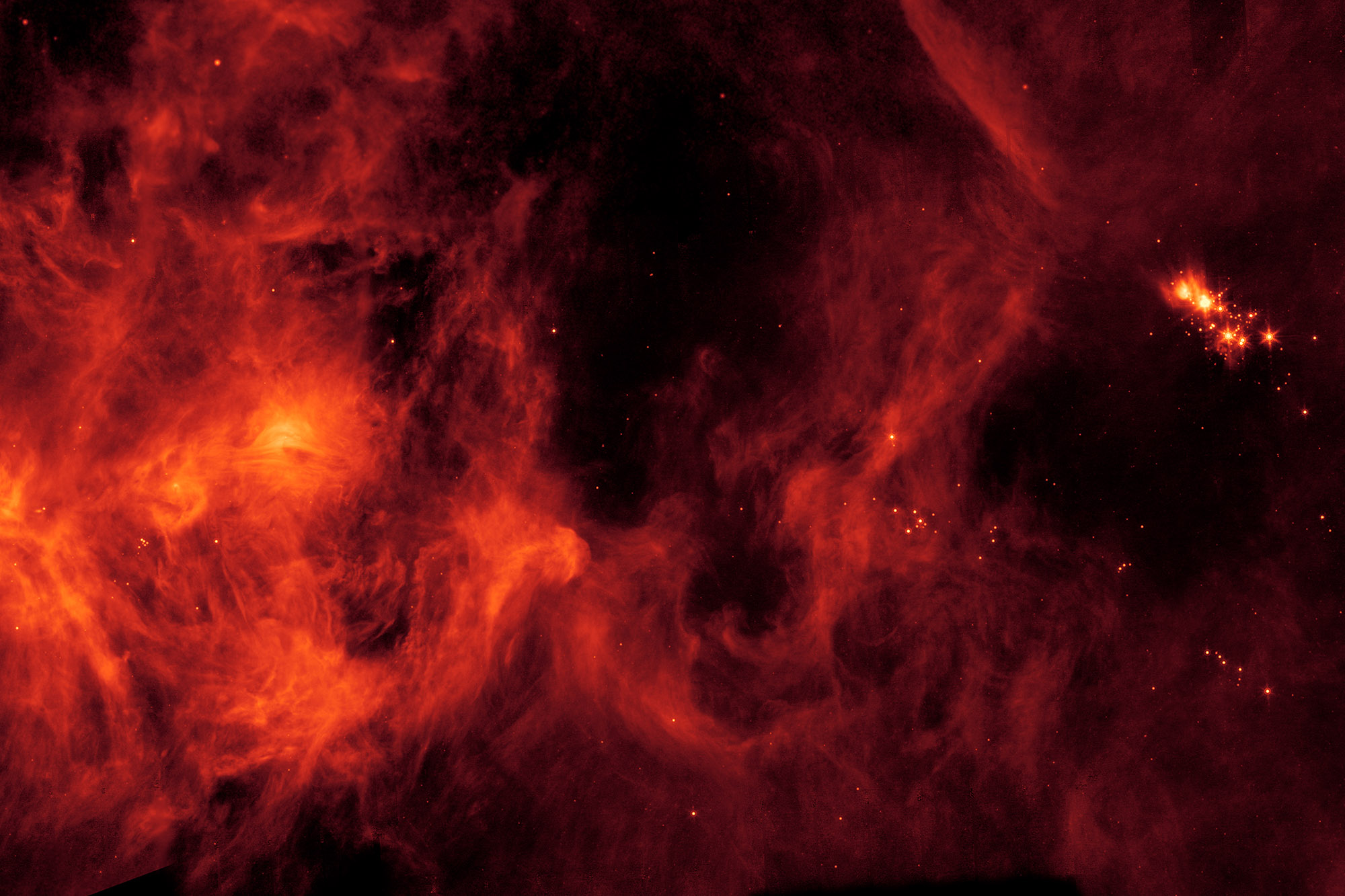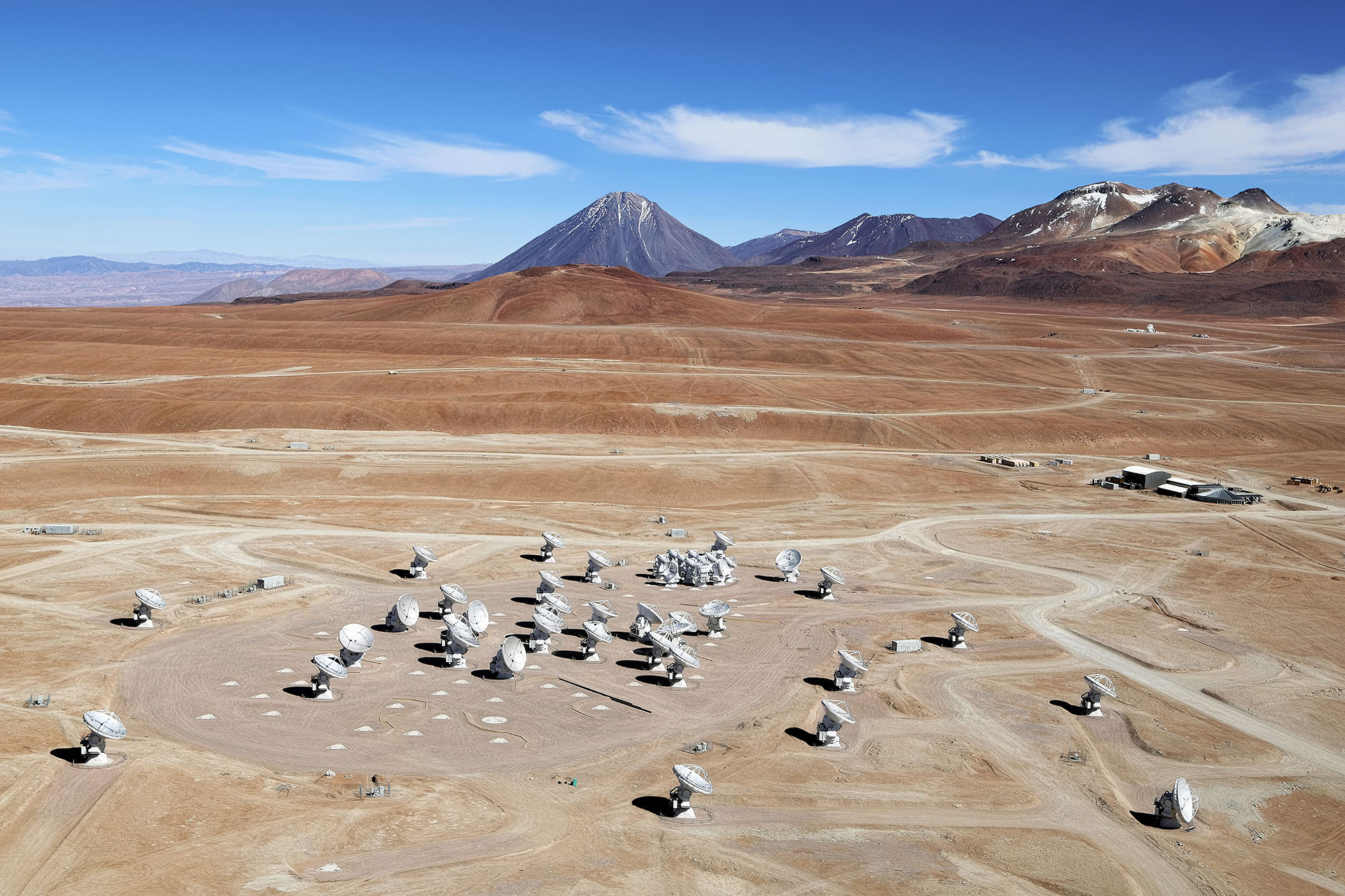An international research group led by a postdoctoral fellow in the University of Virginia’s Department of Astronomy identified a rich organic chemistry in young disks surrounding 50 newly formed stars.
Relying on observations from the Atacama Large Millimeter/submillimeter Array telescope in Chile – known as ALMA – the findings offer astronomers a greater understanding of the mechanisms responsible for the formation of organic molecules in space, at the dawn of planet formation.
The variety of organic molecules identified also raises an important question for astronomers: How common is the chemical heritage of these disks? Since disks around young stars are known to be the sites of future planet formation, understanding their prebiotic potential is key. The findings of the Star and Planet Formation Laboratory of Japan’s RIKEN Cluster for Pioneering Research were published March 23 by the American Astronomical Society in The Astrophysical Journal.

Yao-Lun Yang is lead author of the paper and a postdoctoral fellow at UVA, based in the Department of Astronomy. (Contributed photo)
“This research is going to help us test our current knowledge about the chemical evolution ongoing in the disks of newly formed stars,” said Yao-Lun Yang, lead author of the paper and an Origins postdoctoral fellow with the Virginia Initiative on Cosmic Origins, based in UVA’s Department of Astronomy. Yang was a Japan Society for the Promotion of Science fellow at RIKEN, a national science research institute in Japan when he began work on the project with other researchers affiliated with RIKEN, the University of Tokyo, France’s Institut de Planétologie et d’Astrophysique de Grenoble, and other institutions.
“We surveyed the chemical composition of the material where these protoplanetary disks and planets grow from, and what we found quite interesting were the range of complex molecules we observed,” Yang said. “Even where we observed a wide range of total amounts of specific organic molecules, we still found a similar chemical pattern among the different regions we studied.”
Studying the Perseus Molecular Cloud

A collection of gas and dust over 500 light-years across, the Perseus Molecular Cloud hosts an abundance of young stars. (Photo courtesy NASA/JPL-Caltech)
Stars form from interstellar clouds, which consist of gas and dust, via gravitational contraction. These young stars are surrounded by disks, which have the potential to evolve into planetary systems. Identifying the initial chemical composition of these forming disks may offer clues to the origins of planets like Earth, Yang said.
The RIKEN-based research focused on 50 sources embedded in the Perseus molecular cloud, which contains young protostars with protoplanetary disks forming around them. Even with the power of the ALMA telescope, it took more than three years, over the course of several projects, to complete the survey. By observing the emission emitted by molecules at specific frequencies, the team studied the amount of methanol, acetonitrile, methyl formate, dimethyl ether, and larger organics – an unprecedented survey of “complex” organic molecules within a large sample of solar-type young stars.

According to the survey, 58% of the sources contained large organic molecules, while 42% of the sources exhibited no sign of them. Surprisingly, the total amount of any given molecule measured showed a wide variety, more than 100 times difference, even for such similar stars. Some sources proved to be rich in organic molecules, even if they had relatively little material surrounding the protostar. Others featured few organic properties, despite a large amount of material surrounding the protostar. Nonetheless, the relative quantities were remarkably similar.
The fact that some systems have substantially more or less total organic content suggests that the evolutionary history of the local environment may have a critical impact to the molecular composition in the resultant planetary systems. While the chemical patterns between systems appear to be relatively similar, some disks may “luck out” with more organic richness compared to others.
Such questions hopefully will be answered in the future through efforts to follow the organic reservoir over time by expanding surveys to even younger or much older systems, Yang said.
Media Contact
Article Information
April 2, 2021
/content/peas-pod-uva-astronomers-survey-young-stars-published

